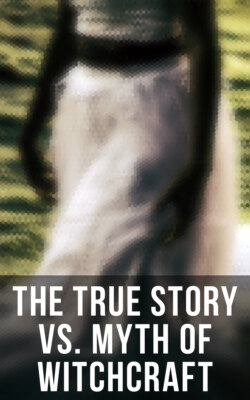Читать книгу The True Story vs. Myth of Witchcraft - William Godwin - Страница 220
На сайте Литреса книга снята с продажи.
FOOTNOTES
Оглавление2. Epistola Fratris Rogerii Baconis de Secretis Operibus Artis et Naturæ et de Nullitate Magiæ.
3. Laches, oversight.
4. This patriotic sentiment would seem to show that the book was written or published about the time of the Spanish Armada.
5. Hermes Trismegistus (‘thrice great’), a fabulous Chaldean philosopher, to whom I have already made reference. The numerous writings which bear his name were really composed by the Egyptian Platonists; but the mediæval alchemists pretend to recognise in him the founder of their art. Gower, in his ‘Confessio Amantis,’ says:
‘Of whom if I the namès calle,
Hermes was one the first of alle,
To whom this Art is most applied.’
The name of Hermes was chosen because of the supposed magical powers of the god of the caduceus.
6. That is, costard, or apple, mongers.
7. See Appendix to the present chapter, p. 58.
8. The pentageron, or pentagramma, is a mystic figure produced by prolonging the sides of a regular pentagon till they intersect one another. It can be drawn without a break in the drawing, and, viewed from five sides, exhibits the form of the letter A (pent-alpha), or the figure of the fifth proposition in Euclid’s First Book.
9. From the Greek φόβος, fear; φόβητρα, bugbears.
10. Bad puns were evidently common on the stage before the days of Victorian burlesque.
11. So Shakespeare, ‘1 Hen. IV.,’ iii. Falstaff says: ‘I make as good use of it as many a man doth of a death’s head, or a memento house.’
12. So in the ‘Passionate Pilgrim’:
‘Save the nightingale alone:
She, poor bird, as all forlorn,
Leaned her breast uptill a thorn.’
13. A peripatetic, or walking philosopher. Observe the facetiousness in ‘Aristotle’s stamp.’ Aristotle was the founder of the Peripatetics.
14. Fabius Cunctator, or the Delayer, so called from the policy of delay which he opposed to the vigorous movements of Hannibal. One would suppose that the humour here, such as it is, would hardly be perceptible to a theatrical audience.
15. In the old German ‘Faustbuch,’ the title of ‘Prince of the North’ is given to Beelzebub.
16. Demogorgon, or Demiourgos—the creative principle of evil—figures largely in literature. He is first mentioned by Lactantius, in the fourth century; then by Boccaccio, Boiardo, Tasso (‘Gierusalemme Liberata’), and Ariosto (‘Orlando Furioso’). Marlowe speaks, in ‘Tamburlaine,’ of ‘Gorgon, prince of Hell.’ Spenser, in ‘The Faery Queen,’ refers to—
‘Great Gorgon, prince of darkness and dead night,
At which Cocytus quakes, and Styx is put to flight.’
Milton, in ‘Paradise Lost,’ alludes to ‘the dreaded name of Demogorgon.’ Dryden says: ‘When the moon arises, and Demogorgon walks his round.’ And he is one of the dramatis personæ of Shelley’s ‘Prometheus Unbound’: ‘Demogorgon, a tremendous gloom.... A mighty Darkness, filling the seat of power.’
17. Boasts. So in Peele’s ‘Edward I’: ‘As thou to England brought’st thy Scottish braves.’
18. This reiteration of the same final word, for the sake of emphasis, is found in Shakespeare.
19. A corner or college cap.
20. An allusion to the old legend that Brut, or Brutus, great-grandson of Æneas, founded New Troy (Troynovant), or London.
21. Probably the reference is to the sunflower.
22. The classic writers usually identify the hyacinth with Apollo.
23. The rose, that is, of the Virgin Queen—an English Diana—Elizabeth. In Shakespeare’s ‘Midsummer Night’s Dream’ (Act iv., scene 1) we read of ‘Diana’s bud.’
